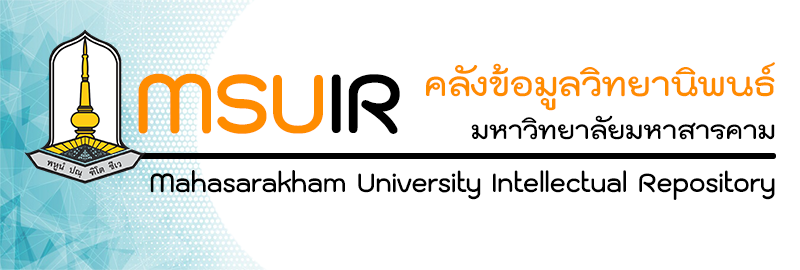Please use this identifier to cite or link to this item:
http://202.28.34.124/dspace/handle123456789/2658| Title: | Flood Forecasting Model in the Lower Northeast of Thailand ตัวแบบสำหรับการพยากรณ์น้ำท่วมในภาคตะวันออกเฉียงเหนือตอนล่างของประเทศไทย |
| Authors: | Pongsakorn Molsin พงศกร มลสิน Orawich Kumphon อรวิชญ์ กุมพล Mahasarakham University Orawich Kumphon อรวิชญ์ กุมพล bungon.k@msu.ac.th bungon.k@msu.ac.th |
| Keywords: | การเรียนรู้ของเครื่องด้วยตัวนำทางกายภาพ อัตราการไหล ภาคตะวันออกเฉียงเหนือตอนล่าง น้ำท่วม Physics-guided Machine Learning Discharge Lower Northeast Flood |
| Issue Date: | 10 |
| Publisher: | Mahasarakham University |
| Abstract: | The objective of this research is to evaluate the optimized models to predict flooding from a daily meteorological and hydrological data -viz. precipitation, minimum temperature, maximum temperature, evapotranspiration, and discharge from the years 2008 to 2022. Three models as Artificial Neural Network (ANN), Long Short-Term Memory (LSTM), and Physics-Guided Long Short-Term Memory (PG-LSTM) were considered, and the performances measured via Nash-Sutcliffe Efficiency (NSE), Root Mean Squared Error (RMSE), and Percentage Bias (PBIAS). The results with a higher value of mean NSE (> 75%) and PBIAS between ±10 from three models can be used for forecasting. As a result, the performances of ANN, LSTM and PG-LSTM perform the suitable for forecasting, respectively. ในงานวิจัยนี้ มีวัตถุประสงค์คือสร้างแบบจำลองที่เหมาะสมสำหรับการพยากรณ์น้ำท่วม จากข้อมูลทางอุตุนิยมวิทยา และข้อมูลอุกทกวิยา ได้แก่ ปริมาณฝนรายวัน อุณหภูมิต่ำสุดรายวัน อุณหภูมิสูงสุดรายวัน อัตราการระเหยรายวัน และอัตราการไหลรายวัน ตั้งแต่ปี 2551 ถึง 2565 ด้วยแบบจำลองโครงข่ายประสาทเทียม (Artificial Neural Network: ANN) แบบจำลอง Long Short-Term Memory (LSTM) และ แบบจำลอง Physics-Guided Long Short-Term Memory (PG-LSTM) ทำการเปรียบเทียบประสิทธิภาพของแบบจำลองพิจารณาจากค่าสัมประสิทธิ์ประสิทธิภาพของแนช–ซัทคลิฟฟ์ (Nash–Sutcliffe Efficiency: NSE) ค่ารากที่สองของค่าความคลาดเคลื่อนกําลังสองเฉลี่ย (Root Mean Squared Error: RMSE) และร้อยละความเอนเอียง (Percentage Bias: PBIAS) ผลการศึกษา พบว่า มีค่า NSE เฉลี่ยของแต่ละแบบจำลองมากกว่า 0.75 และ ค่า PBIAS เฉลี่ยของแต่ละแบบจำลองอยู่ระหว่าง -10 ถึง 10 สามารถใช้ในการพยากรณ์ได้ ซึ่งแบบจำลอง ANN ให้ผลลัพธ์ดีที่สุด รองลงมาคือแบบจำลอง LSTM และ แบบจำลอง PG-LSTM ตามลำดับ |
| URI: | http://202.28.34.124/dspace/handle123456789/2658 |
| Appears in Collections: | The Faculty of Science |
Files in This Item:
| File | Description | Size | Format | |
|---|---|---|---|---|
| 64010256002.pdf | 3.53 MB | Adobe PDF | View/Open |
Items in DSpace are protected by copyright, with all rights reserved, unless otherwise indicated.

